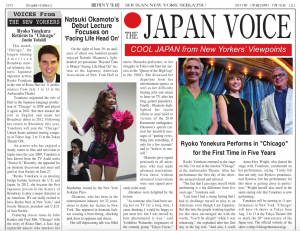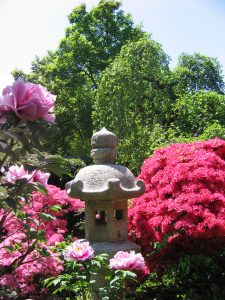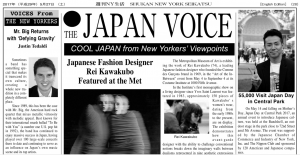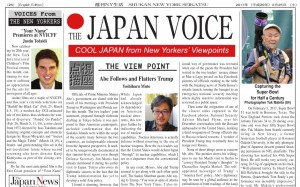Justin’s Japan: Ryoko Yonekura Returns to ‘Chicago’
By JQ magazine editor Justin Tedaldi (CIR Kobe-shi, 2001-02) for Shukan NY Seikatsu. Justin has written about Japanese arts and entertainment for JETAA since 2005. For more of his articles, click here.
This month, “Chicago,” the longest-running American Broadway musical in history, features Japanese superstar actress Ryoko Yonekura in the role of Roxie Hart for 11 performances from July 3-13 at the Ambassador Theatre.
Yonekura originated the role of Hart in the Japanese-language production of “Chicago” in 2008 and played it again in 2010. She then learned the role in English and made her Broadway debut in 2012. Following her return to Broadway this year, Yonekura will join the “Chicago” U.S. national touring company in Tokyo August 2-13 at the Tokyu Theater Orb.
An actress who has enjoyed a steady career in film and television in Japan since the year 2000, Yonekura is best known from the TV Asahi series “Doctor X.” Recently, she appeared for an intimate discussion and meet and greet at Asia Society on June 27.
“Ryoko Yonekura is an amazing bridge builder between the U.S. and Japan. In 2012, she became the first Japanese person in the history of Broadway to play a major character as an American. We are really excited to have Ryoko back in New York,” said Josette Sheeran, president and CEO of Asia Society.
Featuring classic tunes by John Kander and Fred Ebb, “Chicago” tells the story of Roxie Hart, a Jazz age nightclub dancer who murders her lover after an argument, and the media sensationalism that follows. Originally produced for Broadway in 1975 and revived in 1996, the show won six Tony Awards the following year, and the 2002 film adaptation starring Reneè Zellweger, Catherine Zeta-Jones and Richard Gere won Best Picture at the Academy Awards. For tickets, visit www.chicagothemusical.com.
JQ Magazine: Film Review — JAPAN CUTS 2017 at Japan Society

Neko Atsume House, starring Atsushi Ito and an army of kitties, makes its East Coast premiere at Japan Society July 16.
(Neko Atsume House © 2017 Hit-Point:Neko Atsume House Production Committee
By Lyle Sylvander (Yokohama-shi, 2001-02) for JQ magazine. Lyle has completed a master’s program at the School of International and Public Affairs at Columbia University and has been writing for the JET Alumni Association of New York since 2004. He is also the goalkeeper for FC Japan, a New York City-based soccer team.
The 11th edition of JAPAN CUTS, the Japan Society of New York’s extensive showcase of new Japanese cinema, premieres tomorrow (July 13) for 11 days of unique programming, special guests, and the chance to see exclusive North American releases. This year’s lineup—29 films in all—demonstrates the wide variety of Japan’s contemporary cinematic space. The programming runs the gamut from documentaries to shoestring independents, old classics and mainstream blockbusters. A handful of films were made available for JQ press screenings; here are some notable selections:
Neko Atsume House (July 16, 12:00 p.m.): Based on a popular smartphone game, this film deals with writer’s block in a most unique way. When the novelist-protagonist Sakumoto-san (Atsushi Ito) finds himself faced with his profession’s most dreaded dilemma, he accepts an assignment to write a series of horror novels—a major step backward for this once-celebrated author. In order to solve his predicament, he adopts the old cliché of secluding himself in a country house for creative inspiration. What follows is a thoroughly unexpected delight of a movie as he makes friends with a multitude of friendly felines with whom he bonds.
At the Terrace (July 16, 6:45 p.m.): Kenji Yamauchi adapts his play for the screen, in what can best be described as a Japanese Who’s Afraid of Virginia Woolf? This dialogue-heavy film finds a group of guests drinking into the night. As the alcohol makes its way through their systems, the characters let down their guard and inhibitions and make confrontational and incriminating accusations against one another. The veneer of civility gradually dissipates until the carnal desires and petty jealousies take over the proceedings. In the process, Yamauchi skewers the pretensions of Japan’s professional and bourgeois class.
Haruneko (July 16, 8:45 p.m.): Dealing with the Japanese fascination with death is first-time director Soro Hakimoto’s Haruneko, a tale set at a forest café where people come to die. In some ways, the setting reminds one of the infamous “suicide forest” at the base of Mt. Fuji, another place for a similar purpose. Unlike that real location, Hakimoto creates an ambience that can only be described as “melancholy mysticism” as the café manager, young boy and an old woman guide their visitors into the deep woods to dissolve into the ether. This film debut serves as a harbinger of great things to come from Hakimoto, who establishes himself as Japan’s answer to the great Thai director Apichatpong Weerasethakul (Tropical Malady, Uncle Boonmee Who Can Recall his Past Lives).
JQ Magazine: Nippon in New York — Ghibli Fest, JAPAN CUTS, One OK Rock
By JQ magazine editor Justin Tedaldi (CIR Kobe–shi, 2001-02). Justin has written about Japanese arts and entertainment for JETAA since 2005. For more of his articles, click here.
Before and after the outdoor fireworks, enjoy some summer events in the cool indoors, whether it’s catching one of the dozens of films premiering at Japan Society’s annual festival, or enjoying anything from interpretative theater to the latest rock sensation.
This month’s highlights include:
June 30-July 2
The Club (La MaMa), 74A East 4th Street
$20-$100
Celebrated for her captivating work with the Martha Graham Dance Company, dancer/choreographer Miki Orihara premieres the second incarnation of her multi-media work, In the Box (ITB). Directed by theatrical visual-effects specialist Hiroyuki Nishiyama, this new experimental dance-theater piece features performances by Bessie Award winner Orihara with original music by best-selling Sony Music artist Senri Oe.
Following the 2015 Using cutting edge animations and projections from Japan, In the Box 2 (ITB2) juxtaposes three-dimensional sounds and images with the flesh and bones of a dancer and her moving shadow. ITB2 follows the 2015 premiere of ITB which explored the paradox of “Where Technology Meets the Body” inspired by Schrödinger‘s cat (quantum mechanics). ITB 2 picks up where its predecessor left off and opens the book of our lives in a paradoxical nature. “ITB2 explores human nature by mixing the human body with technology,” explains Orihara. “Audiences will experience entirely new sensations!” Using a streamlined technology of sensor system and infrared camera, audiences can enjoy the dancer’s motions and visual expressions through streamlined technology including CG, infrared cameras, and three-dimensional audio.
Wednesday, July 4-5
Village East Cinema, 189 Second Avenue
$15
Part of this year’s Studio Ghibli Fest! Perfect for audiences of all ages, PONYO centers on the friendship between five-year-old Sosuke and a magical goldfish name Ponyo, the young daughter of a sorcerer father and a sea-goddess mother. After a chance encounter, Ponyo yearns to become a human so she can be with Sosuke. Hayao Miyazaki’s tale is a beautiful combination of unbridled imagination, visual wonder and tender love, humor, and devotion from the emotional heart of the film. The July 4 screening will be presented in Japanese with English subtitles.
July 13-23
Japan Society, 333 East 47th Street
Most films $14/$11 seniors and students, $10 members
Now in its 11th year, North America’s largest festival of new Japanese cinema returns to serve up a slice of the best and boldest titles from Japan never before seen in NYC with special guest filmmakers and stars, post-screening Q&As, parties and much more. Boasting a thrilling slate of epic blockbusters, shoestring independents, radical documentaries, mind-bending avant-garde, newly-restored classics, and breathtaking animation, JAPAN CUTS 2017 promises a bounty of cinematic discoveries for film fans and pop culture enthusiasts alike. For a list of this year’s special guests, click here.
JQ Magazine: Book Review — ‘25 Places in Canada Every Family Should Visit’

“This year marks Canada’s 150th anniversary, so it’s a wonderful time for families to explore the wonders of the country. You just need the right information to do so, and 25 Places serves as a worthy reference guide.” (TouchWood Editions)
By Rashaad Jorden (Yamagata–ken, 2008-10) for JQ magazine. A former head of the JETAA Philadelphia Sub–Chapter, Rashaad is a graduate of Leeds Beckett University with a master’s degree in responsible tourism management. For more on his life abroad and enthusiasm for taiko drumming, visit his blog at www.gettingpounded.wordpress.com.
Summer is almost here. With the kids out of school, it’s the perfect time to explore new places and travel as a family. But where should you go?
Those thinking about Canada should seek out Jody Robbins’ 25 Places in Canada Every Family Should Visit for ideas. Robbins, a JET alum (Tottori-ken, 1994-97) and arguably one of Canada’s most prominent travel writers, profiles locations going counterclockwise from Victoria to Yukon, from the famous (Toronto, Vancouver) to the relatively unknown (Parksville-Qualicum Beach, Avalon Peninsula).
As the book is geared towards parents, Robbins devotes plenty of space to sharing advice about how they can entertain their young ones. In addition to expounding on the requisite what to do and see activities for each destination, Robbins just as importantly lists family-friendly options for dining (“Kids will love the wood-fired bambino pizza” at Pizzeria Prima Strada in Victoria) and lodging (a highlight of the Fairmount Chateau Laurier in Ottawa is the Art Deco-style pool, which “children love parading down to in their child-size bathrobes”).
25 Places features a diverse mix of urban and nature-filled destinations (like Outaouauis), so readers will get a great sense of Canada’s varied landscapes, as well as some surprises (beaches on the Prairies? Yes, they exist) and more importantly, how to arrive prepared for them. While it’s obvious that Robbins would include information about how to get around certain places, she excels when extensively detailing how to make your camping trip a safe and wonderful experience: An entire chapter is devoted to providing readers advice about tackling and overcoming the challenges that awaits (as well as tips about what to pack and eat). Camping novices would do well to heed this helpful advice.
JQ Magazine: Philadelphia LOVEs Japan
By Therese Stephen (Iwate-ken, 1996-99) for JQ magazine.
What many people don’t know is that the City of Brotherly Love is in love with Japan, and has been since the 1876 Centennial Exhibition in Philadelphia, when the Japanese Pavilion became one of the most popular exhibits of that historic World’s Fair.
When you think of Philadelphia, you probably think of cheesesteaks, the Liberty Bell, Independence Hall or the Rocky steps at the Philadelphia Museum of Art. What you might not realize is that Philly has many ways for Japanese, and the Japanese-at-heart, to get their Japan fix for a lot less than a roundtrip ticket to Tokyo. So, whether you’re planning a quick weekend getaway or day trip this summer, or if you’re a returning Philly JET looking at your hometown with a new post-JET perspective, read on for Philly’s best Japan picks.
Let’s start with those famous Rocky steps. It’s cheesy and we know it, but everyone who visits Philly has to replay that famous Rocky Balboa moment. So once you’ve run to the top of the steps and done your obligatory fists-in-the-air-pose, head on into the Philadelphia Museum of Art (PMA) and find your way to the East Asian Galleries.
One of the most endearing and exciting things about the PMA are its period rooms. While there are plenty of rooms displaying objects on pedestals or paintings on walls, a few steps through a doorway connecting two galleries will suddenly put you in the middle of an Indian temple or the hall of a Chinese palace. Wander a little further and you’ll find Sunkaraku Tea House, the highlight of the Japanese collection in the East Asian Galleries.
Justin’s Japan: Mr. Big Returns with ‘Defying Gravity’
By JQ magazine editor Justin Tedaldi (CIR Kobe-shi, 2001-02) for Shukan NY Seikatsu. Justin has written about Japanese arts and entertainment for JETAA since 2005. For more of his articles, click here.
Sometimes a band has something special that makes it transcend its own culture, creating a whole new tradition in a completely different place.
Since 1989, this has been the case with Mr. Big, the American hard rock quartet that mixes metallic virtuosity with melodic appeal. Best known for their international smash ballad “To Be with You” (a number one pop U.S. hit in 1992), the band has continued to enjoy massive success in Japan, having played over 100 large-scale concerts there to date and continuing to serve as an influence on Japan’s own music scene and its top artists.
Mr. Big’s drummer Pat Torpey and bassist Billy Sheehan have previously performed with Japan’s all-time most successful rock group B’z (with the latter even joining them on tour); lead singer Eric Martin has recorded a successful string of “Mr. Vocalist” albums consisting of songs originally made famous by female Japanese singers; and guitarist Paul Gilbert has appeared on Japanese talk shows displaying both his tremendous guitar chops and dedicated study of the language.
In a new tradition, the U.S. will get the first taste of all-new Mr. Big material as the group launches a 13-date national tour beginning May 31, with a New York stop at B.B. King Blues Club & Grill on June 10. The tour precedes the release of the group’s ninth studio album, “Defying Gravity,” available July 7 on Frontiers Records. The new songs will presumably make their live debut at these special American gigs.
For tickets to the show and more information, visit www.bbkingblues.com and www.mrbigsite.com.
Also on June 10 at 12:00 p.m., An Intimate Afternoon of Conversation and Music with Mr. Big will take place at The Cutting Room (44 East 32nd Street), featuring a long–form interview with author and journalist Brad Tolinsk. This special event includes an opportunity for audience questions, a short acoustic performance, and a meet and greet. Tickets are $25; for more information, click here.
Justin has written about Japanese arts and entertainment since 2005. For more of his stories, visit http://jetaany.org/magazine.
JQ Magazine: Nippon in New York — AnimeNEXT, Mr. Big, ‘My Neighbor Totoro’
By JQ magazine editor Justin Tedaldi (CIR Kobe–shi, 2001-02). Justin has written about Japanese arts and entertainment for JETAA since 2005. For more of his articles, click here.
After an unusually chilly spring, it’s finally starting to feel like summer. Enjoy some seasonal events this month that celebrate the best of both fine art and pop art.
This month’s highlights include:

Courtesy of Asiasociety.org
June 1-2, 6:30 p.m.
Asia Society, 725 Park Avenue
$12, $10 students/seniors, $8 members
Highlighting some of the most exciting new voices in cinema, New York Japan CineFest presents two nights of short films by emerging Japanese and Japanese American filmmakers. Featuring 15 short films spanning drama, sci-fi, documentary and anime, the first night’s program is followed by a reception. Click here to check out Program 2 on Friday, June 2, 2017.

Courtesy of Bluenote.net
June 6-11
Blue Note Jazz Club, 131 West 3rd Street
$30-$45
Japan has produced an impressive assemblage of jazz pianists; from Toshiko Akiyoshi and Makoto Ozone to Junko Onishi. And now, well into the change of the 21st century, the pianist/composer Hiromi Uehara is the latest in that line of amazing musicians. Ever since the 2003 release of her debut album Another Mind, Hiromi has electrified audiences and critics east and west, with a creative energy that encompasses and eclipses the boundaries of jazz, classical and pop parameters; taking improvisation and composition to new heights of complexity and sophistication. These special duet performances with Colombian harpist Edmar Castañeda are sure to inject a Latin flavor to the mix.
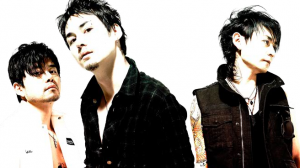
Courtesy of Okmusic.jp
June 9-11
Atlantic City Convention Center, 1 Convention Boulevard
$50-$60
The largest independently organized anime convention in the New York/New Jersey metropolitan area. AnimeNEXT features Japanese creators of anime and manga, voice actors, musical acts, artists, vendors and exhibits, events, panels, workshops, gaming, and cosplay. This year’s special guest is Oblivion Dust, a major label Japanese rock act, which reunited in 2007 following a six-year hiatus. Although they were originally largely influenced by early ’90s American grunge bands, since reuniting their music has become straight alternative rock. They stand out in the Japanese scene as most of their songs are written and sung in fluent English.
JQ Magazine: Book Review — ‘The Little Exile’
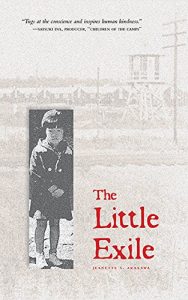
“The Little Exile reveals a world of angst, but hope in a world that has been turned upside down.” (Stone Bridge Press)
By Rashaad Jorden (Yamagata-ken, 2008-10) for JQ magazine. A former head of the JETAA Philadelphia Sub-Chapter, Rashaad is a graduate of Leeds Beckett University with a master’s degree in responsible tourism management. For more on his life abroad and enthusiasm for taiko drumming, visit his blog at www.gettingpounded.wordpress.com.
Earlier this year I explored Uprooted, an exhibition devoted to the Japanese American internment. Considering how many families were displaced following Pearl Harbor, “uprooted” is at the perfect word to describe how a lot of people’s lives were disrupted.
Uprooted also comes to mind when reading The Little Exile. Written by Jeanette Arakawa, the novel tells the story of Marie Mitsui, a Japanese American girl living in San Francisco, whose world is jolted after the events of December 7, 1941 as she and her family is forced to relocate to an internment camp in Arkansas. Based on her own life story (although some names in the book have been changed), Arakawa takes readers on a journey through the brutal challenges that many Japanese Americans faced.
At first, you might think that The Little Exile is an uneventful novel, as the first few chapters capture a seemingly carefree life that the Mitsuis enjoy (Marie has an older brother named Brian). They seem to be a typical American family—Marie’s parents run a dry cleaning shop where the whole family lives. She loves roller-skating with her friend Beverly and often spends time on the playground (She frequently wins amateur hour contests there).
However, San Francisco is not paradise for the Mitsuis—Brian learns from his father that due to “racial covenants,” the family is prohibited from buying houses in a certain neighborhood. In addition, classmates hurl racial slurs at Brian and Marie upon their arrival at the Lawton School in December 1940.
JQ Magazine: Japan Society Salutes Godzilla with Concert Spectacular

Special guests Charan-Po-Rantan and Makigami Koichi (center) performed in Godzilla Legend — Music of Akira Ifukube at Japan Society on April 28. The concert was conceived and arranged by Makoto Inoue (far left) and performed by the band Hikashu and other special guest musicians. (Ayumi Sakamoto)
By Lyle Sylvander (Yokohama–shi, 2001-02) for JQ magazine. Lyle has completed a master’s program at the School of International and Public Affairs at Columbia University and has been writing for the JET Alumni Association of New York since 2004. He is also the goalkeeper for FC Japan, a New York City–based soccer team.
On April 28, the Japan Society of New York hosted a delightfully unusual concert of Godzilla music. Yes, you read that correctly. The Japanese pop techno band Hikashu took the stage in a 90-minute intermission-less night of monster music from such iconic classics of the Godzilla canon as Gojira (a.k.a. Godzilla, King of the Monsters!) (1954), Rodan (1956), Mothra (1961), King Kong vs. Godzilla (1962), Ghidora, the Three–Headed Monster (1964), Godzilla vs. Mechagodzilla II (1993) and Godzilla vs. Destoroyah (1995). While the colossal black-green (his color fluctuates from movie to movie) lizard never made an onstage appearance, he made his presence aurally known through Hikashu’s superb performances, with narration by founding member Makoto Inoue (who also played keyboards) and special appearances by the female pop duo Charan-Po-Rantan. Adding to the fun were aural appearances by the Big G’s nemeses, Rodan, King Ghidora, King Kong and Mothra, a gigantic butterfly-like insect who was the only monster to ultimately defeat Godzilla in battle.
Inoue’s narration did more than entertain; it also provided informative commentary on the evolution of the films. As Inoue explained, Godzilla was born out of the collective Japanese fear of both large natural disasters (earthquakes, typhoons and tsunamis) and of the atomic bomb. Produced just nine years after the bombings of Hiroshima and Nagasaki and one year after the U.S. testing of a hydrogen bomb contaminated a Japanese fishing vessel, the original Japanese film is a dark and somber affair. For years, the only available version in North America was a re-edited film that mixed a new English-language narrative with the Japanese monster footage—that film starred Raymond Burr and downplayed the ominous sadness.
JQ Magazine: Nippon in New York — George Takei, Tokyo x Brooklyn, Japan Day @ Central Park
By JQ magazine editor Justin Tedaldi (CIR Kobe-shi, 2001-02). Justin has written about Japanese arts and entertainment for JETAA since 2005. For more of his articles, click here.
As spring continues and the weather continues to warm, New Yorkers can enjoy activities all over the city both indoors and out.
This month’s highlights include:
Monday, May 1, 7:30 p.m.
BAM Howard Gilman Opera House, 30 Lafayette Avenue
$35-$75
Actor and social justice activist George Takei brings his uncanny eloquence and signature wit to BAM. In this very special evening, he shares the story of his Japanese-American family’s forced internment during World War II, a seemingly forgotten part of American history. He also takes audiences through his rise to celebrity as a sci-fi icon, his remarkable journey as social media mega power, and his passionate fight for LGBTQ rights and marriage equality in America—empowering others to beat the odds and make a difference.

Courtesy of Asiasociety.org
Wednesday, May 3, 6:30 p.m.
Monkey Business: Japan/America Writers’ Dialogue
Asia Society, 725 Park Avenue
$20, $15 students/seniors, $12 members
Join a conversation between Japanese and American writers as part of the annual PEN World Voices Festival. This year’s featured writers are award-winning novelist Jamaica Kincaid, author Brian Evenson, Japanese writer Hiroko Oyamada, and Hiromi Ito, one of the most important female voices in contemporary Japanese poetry. Each ticket includes a complimentary copy of the latest volume (#7) of Monkey Business.
Thursday, May 4, 9:00 p.m.
Rough Trade NYC, 64 North 9th Street (Brooklyn)
$15
Kikagaku Moyo (Geometric Patterns) is the musical union between five free spirits. Go Kurosawa (drums, Vocals) and Tomo Katsurada (Guitar, Vocals) formed the band in 2012 as a free artist’s collective. They met Kotsuguy (Bass) while he was recording noise from vending machines and Akira (Guitar) through their university. Ryu Kurosawa had been studying Sitar in India, upon returning home he found the perfect outlet for his practice. Since 2013 the band has released two full lengths, an EP, and several singles. They have toured Australia, the United States, Europe and Japan extensively. Their music is a conversation—sometimes delicate and tender other times explosive, but always human and always changing. With support from Mountain Movers and Jason Spacin’ Killinger.
Thursday, May 11, 7:30 p.m.
B.B. King Blues Club & Grill, 237 West 42nd Street
$29.50-$69.50
With guitar styles ranging from rock, blues, jazz and fusion to pop and soul, Richie Kotzen has built a remarkably diverse 25-plus year career as a guitarist, singer and songwriter. A veteran of numerous groups including the Winery Dogs, Kotzen’s Japan cred is extensive: He wrote the number one song “Shine” as a member of Mr. Big, which was used as the ending theme for the anime series Hellsing, has recorded an entire album of music from the anime series Gundam, and toured as the opening act on the Japanese leg of the Rolling Stones’ 2006 tour. The Kotzen Telecaster guitar has repeatedly been the #1 selling signature model guitar for Fender Japan. This show will include selections from his new album, Salting Earth.
May 13-14
Brooklyn Expo Center, 72 Noble Street
$15-65
This all-new pop culture festival brings together two cultures, Tokyo and Brooklyn, featuring an exciting lineup of musicians, a variety of culinary favorites, innovative technology, artists and performers. The concept is to bridge the gap between Brooklyn creativity and craftsmanship and Japanese pop culture. Festival attendees experience more than just a spectacular neighborhood event, which Includes vintage anime screenings of films like Akira and Ghost in the Shell and headline performances from acts including MIYAVI, Anamanaguchi, DJ Logic (Plus Special Guests) and the Taiko Masala Thunder Drummers.
Sunday, May 14, 9:30 a.m.-4:00 p.m.
Free
Now in its eleventh year, Japan Day has won acclaim from New Yorkers from every walk of life, with Mayor Michael de Blasio calling it an eagerly anticipated cultural event on the city’s calendar. For this year’s event, organizers are planning once again to have both the Japan Run (beginning in the early morning) and the Japan Day Festival, emphasizing enjoyable activities for all ages that will deepen participants’ understanding and appreciation of Japanese culture—not to mention the food, drinks and snacks! Hosted by CNN national correspondent Sandra Endo, previous guest performers have included AKB48, Jero and Akiko Yano.
Sunday, May 28, 5:00 p.m.
Irving Plaza, 17 Irving Place
$25 GA, $95 VIP meet and greet
Generations from Exile Tribe (a.k.a. Generations) is a seven-member Japanese boy band signed to the Avex Group label Rhythm Zone. lThe group belongs to the talent agency LDH and is part of the collective “Exile Tribe,” related to pop group Exile. Generations debuted in November 2012 and is ready to make its New York debut.
Want to stay in the loop on future events? Follow Justin on Facebook and Twitter.
JQ Magazine: Book Review — ‘Japanese Garden Notes’
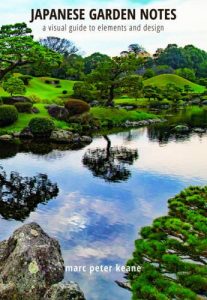
Keane is the perfect person to expound on the finer aspects of the Japanese garden. Reading Japanese Garden Notes basically transports you to a museum as the text is similar to the interpretation you’d receive from a seasoned docent. (Stone Bridge Press)
By Rashaad Jorden (Yamagata-ken, 2008-10) for JQ magazine. A former head of the JETAA Philadelphia Sub–Chapter, Rashaad is a graduate of Leeds Beckett University with a master’s degree in responsible tourism management. For more on his life abroad and enthusiasm for taiko drumming, visit his blog at www.gettingpounded.wordpress.com.
One Golden Week afternoon after exploring Okayama Castle, I decided to stroll over to nearby Kōraku-en Garden. Mainly because it was there and I wasn’t sure what else to do in Okayama. But once I stepped on the premises of the garden, a sense of serenity fell over me as did the feeling I felt like I had found a gem, as well as a place where time stood still.
What is the world of these elegant locales like? Landscape architect and author Marc Peter Keane answers that question and more in Japanese Garden Notes: A Visual Guide to Elements and Design.
It’s clear that Keane, a garden designer and Kyoto resident for roughly twenty years, will explain “what makes a Japanese garden feel the way it does” largely through photographs. But what will readers be looking at? Pretty much Japanese Gardens 101, as each chapter bears the name of a concept or feature present in Japanese gardens like meandering paths, arbor bridges, streams, and more. A phrase further describing the main concept appears prior to the explanations in each chapter and those descriptions run the gamut from the profound (“A meandering path is full of surprises”) to the explanatory regarding the appearance of the garden (“Linking a distant part of the garden with the foreground”) to the borderline hilarious (“Japan is wet, thus the dry garden.”).
JQ Magazine: Nippon in New York — ‘Your Name,’ Miyavi, Charan-Po-Rantan
By JQ magazine editor Justin Tedaldi (CIR Kobe–shi, 2001-02) for Examiner.com. Visit his Japanese culture page here for related stories.
Spring has sprung in the Big Apple, and that means one thing: a new season of sounds, colors, and spectacular performing arts to match the blossoming sakura trees throughout the city.
This month’s highlights include:
Now playing
Landmark Sunshine Cinema, 143 East Houston Street
$14.50
Written and directed by Makoto Shinkai (5 Centimeters Per Second, Children Who Chase Lost Voices), the highest-grossing internationally released anime film in history finally comes to America! The day the stars fell, two lives changed forever. High schoolers Mitsuha and Taki are complete strangers living separate lives. But one night, they suddenly switch places. Mitsuha wakes up in Taki’s body, and he in hers. This bizarre occurrence continues to happen randomly, and the two must adjust their lives around each other. Yet, somehow, it works. They build a connection and communicate by leaving notes, messages, and more importantly, an imprint. When a dazzling comet lights up the night’s sky, something shifts, and they seek each other out wanting something more—a chance to finally meet.
Sunday, April 9, 8:00 p.m.
B.B. King Blues Club and Grill, 237 West 42nd Street
$29.50 advance, $35 day of show
A courageous, spiritually-driven and consummate artist who transcends boundaries, Keiko Matsui has worked alongside the best, including Miles Davis, Stevie Wonder, Hugh Masakela, and Bob James. Her unique melting pot of musical influences have garnered her a devout international following, as she tours relentlessly and seeks to make a genuine connection with her audience. “This music energizes me and I am overwhelmed with emotion when I listen to it. I hope people will allow themselves to go inside the music and become a part of my journey,” says the Tokyo native. In the words of Duke Ellington, Keiko Matsui is “beyond category.”
Friday, April 21, 7:30 p.m. and 9:30 p.m.
Club Bonafide, 212 East 52nd Street
$20
Orange Pekoe is a band composed of vocalist Tomoko Nagashima and guitarist Kazuma Fujimoto. Formed in 1998, they started creating original songs and have developed a unique sound sublimating various types of music such as jazz, Latin, Brazilian and soul. Since then, Orange Pekoe has been acclaimed as a one-of-a-kind uniquely artistic band.. Their performance style varies from a duo to a band, sometimes playing alongside a 16-member big band-style orchestra, which they received renown as one of the most unique and talented artists in Japan.
JQ Magazine: Film Review — ‘Your Name’
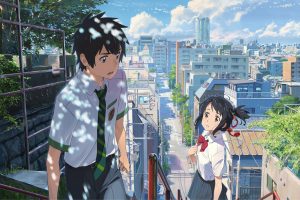
“You do not have to like animated or Japanese films specifically to love Your Name. However, it is rare for any film to capture the Japanese essence and tone as this one has so expertly achieved.” (© 2016 “YOUR NAME.” FILM PARTNERS)
By Greg Beck (Hiroshima-ken, 2006-11) for JQ magazine. Greg is a writer, producer, home brewer, and Social Coordinator for JETAA Southern California and Arizona. A former news producer for Tokyo Broadcasting System in New York, he currently works freelance in Los Angeles. For more cinema reviews, follow him on Twitter at @CIRBECK #MovieReview.
Never mind that Your Name has become the highest-grossing Japanese film internationally, anime or otherwise; this creative and beautiful film written and directed by Makoto Shinkai (5 Centimeters Per Second, Children Who Chase Lost Voices) draws on everything reverent in Japanese history and culture, celebrates the modern metropolis that is Tokyo, and tugs at your heartstrings while embracing the silly and universally relatable challenges of the human experience. You do not have to like animated or Japanese films specifically to love Your Name. However, it is rare for any film to capture the Japanese essence and tone as this one has so expertly achieved.
The story focuses on Mitsuha Miyamizu, a high school girl living in a tiny, rural village in the Hida region of Gifu—or as one classmate puts it: “the boonies.” Growing up with her little sister and grandmother at the local shrine, we are introduced to a culturally rich history of weavers who connect their trade to the local Shinto god and traditions. Mitsuha feels understandably cramped by her rural routine and dreams of moving to Tokyo. Suddenly, that is just where she finds herself, inexplicably waking up in the body of our second protagonist, Taki, a boy of the same age, living in a small apartment with his father in Shinjuku.
As the story progresses, we get to enjoy both very different worlds, but there is no denying the village’s gorgeous rural landscapes rich with nature and the intimate, cultural ceremonies that take center stage. The grandmother’s patient lessons on Mitsuha’s family history grant us special access to something sacred, like a backstage pass to Japanese culture. The last film to achieve this feeling, Okuribito (Departures), later won the Oscar for Best Foreign Language Film in 2009. Your Name is similar, but surpasses it by making the cord weaving pivotal to understanding the supernatural body swapping, blending epic adventure with sublime heartache.
Justin’s Japan: ‘Your Name’ Premieres at NYICFF
By JQ magazine editor Justin Tedaldi (CIR Kobe-shi, 2001-02) for Shukan NY Seikatsu. Justin has written about Japanese arts and entertainment for JETAA since 2005. For more of his articles, click here.
Now celebrating its 20th year, the New York International Children’s Film Festival returns this month, continuing its mission to cultivate an appreciation for the arts for moviegoers of all ages.
Anime films are a staple of NYICFF, and this year’s citywide selections are “Rudolf the Black Cat” (Feb. 25, March 4-5, 19), a modern-day CGI-animated tale of two kitties that celebrates the wonder of discovery; “Panda! Go Panda!” (Feb. 26, March 5, 11, 18), a retro classic from 1972 directed by Isao Takahata and featuring original concepts and character designs by Hayao Miyazaki; and “Ancien and the Magic Tablet” (March 18-19), a fender- and genre-bending film set in the not-too-distant future whose second screening also hosts director Kenji Kamiyama as part of the closing ceremonies.
By far, the most anticipated film is the East Coast premiere of “Your Name” (Feb. 25). Released in Japan last August, it smashed all box office records for the year and is currently the highest-grossing anime film worldwide (beating out Miyazaki’s own Oscar-winning “Spirited Away” by over $40 million at press time).
Written and directed by Makoto Shinkai (“5 Centimeters per Second”), “Your Name” tells the story of a young man living in Tokyo and a young woman living in the countryside who suddenly start switching bodies on a regular basis. It has been widely praised for both its animation style and emotional impact.
For more on this year’s festival, visit http://nyicff.org. Tickets are available at www.ticketweb.com.
JQ Magazine: Book Review — ‘Fred Korematsu Speaks Up’
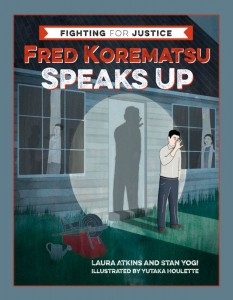
“Fred Korematsu Speaks Up skillfully introduces a civil rights icon and other brave men and women to a new audience.” (Heyday Books)
By Rashaad Jorden (Yamagata-ken, 2008-10) for JQ magazine. A former head of the JETAA Philadelphia Sub-Chapter, Rashaad is a graduate of Leeds Beckett University with a master’s degree in responsible tourism management. For more on his life abroad and enthusiasm for taiko drumming, visit his blog at www.gettingpounded.wordpress.com.
On January 30 of this year, you may have noticed a certain bespectacled figure serving as the Google Doodle: Fred Korematsu. Possibly unknown to many of you (In fact, I didn’t know the name until several days prior to his being honored by Google), Korematsu was nonetheless an important civil rights figure of the 20th century and has gotten the recognition he deserves as in recent years, with Fred Korematsu Day being celebrated in several states. Now, younger readers are offered an informative look at his fight for justice.
Co-written by Laura Atkins and Stan Yogi, Fred Korematsu Speaks Up documents the journey of the man who fought against the forced relocation of Japanese Americans to prison camps during World War II. The book provides details about Korematsu and his battle, but also about social movements and other groups that have suffered enormous discrimination, such as African Americans and Chinese Americans.
Much of Korematsu’s life story is told in poem-like stanzas, starting with an incident as a young man in which he was refused a haircut at a barbershop because of his race. Atkins and Yogi then take readers through significant moments in his life, from the personal (such as how Korematsu came to be known as “Fred”) to monumental events for the Japanese American community (like the bombing of Pearl Harbor and President Franklin D. Roosevelt signing an executive order authorizing the military’s removal of people of Japanese descent from their homes on the West Coast).

